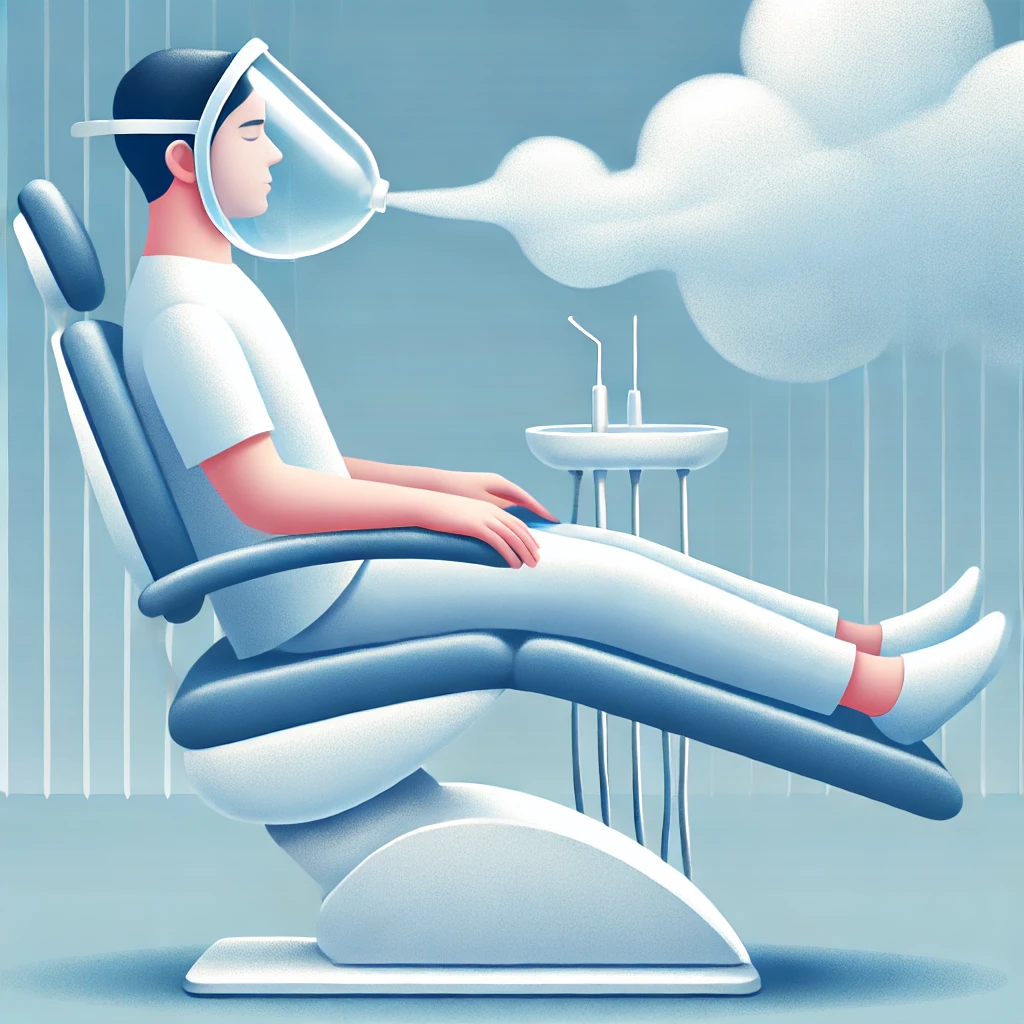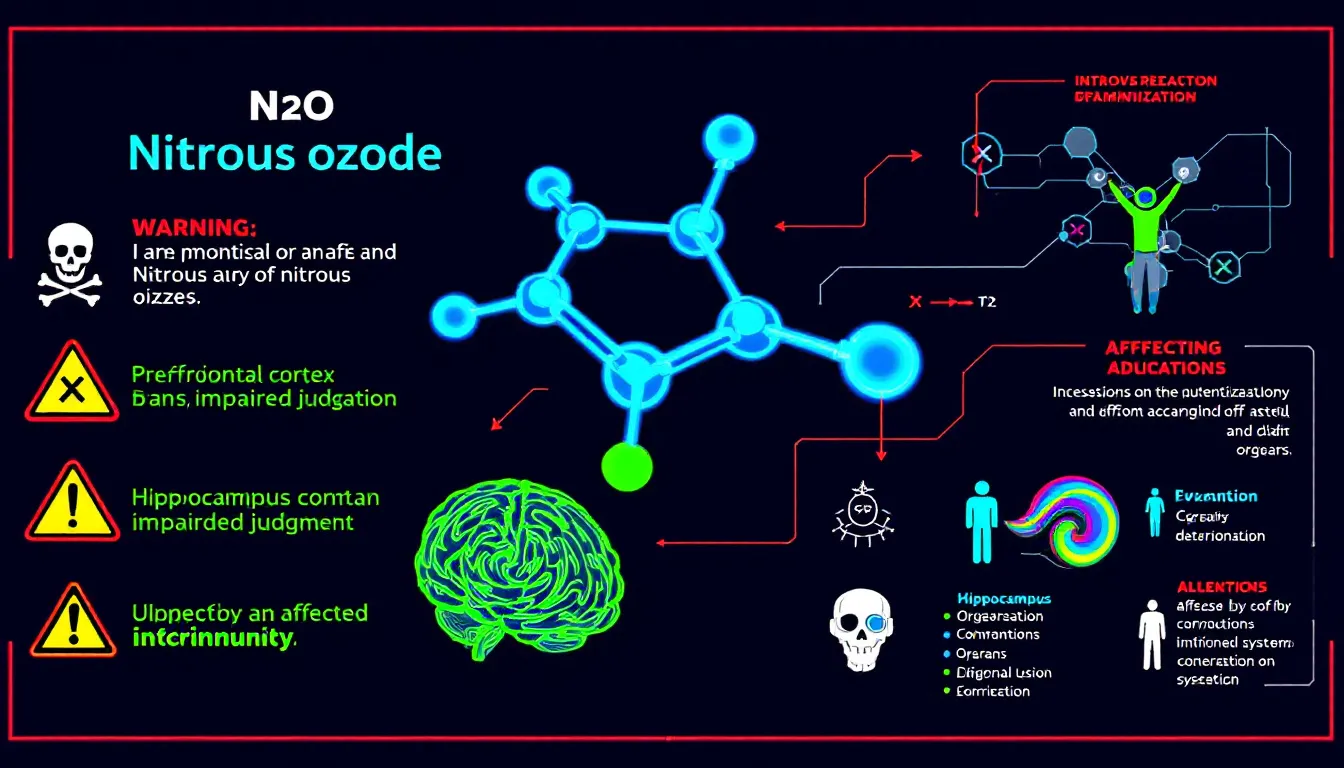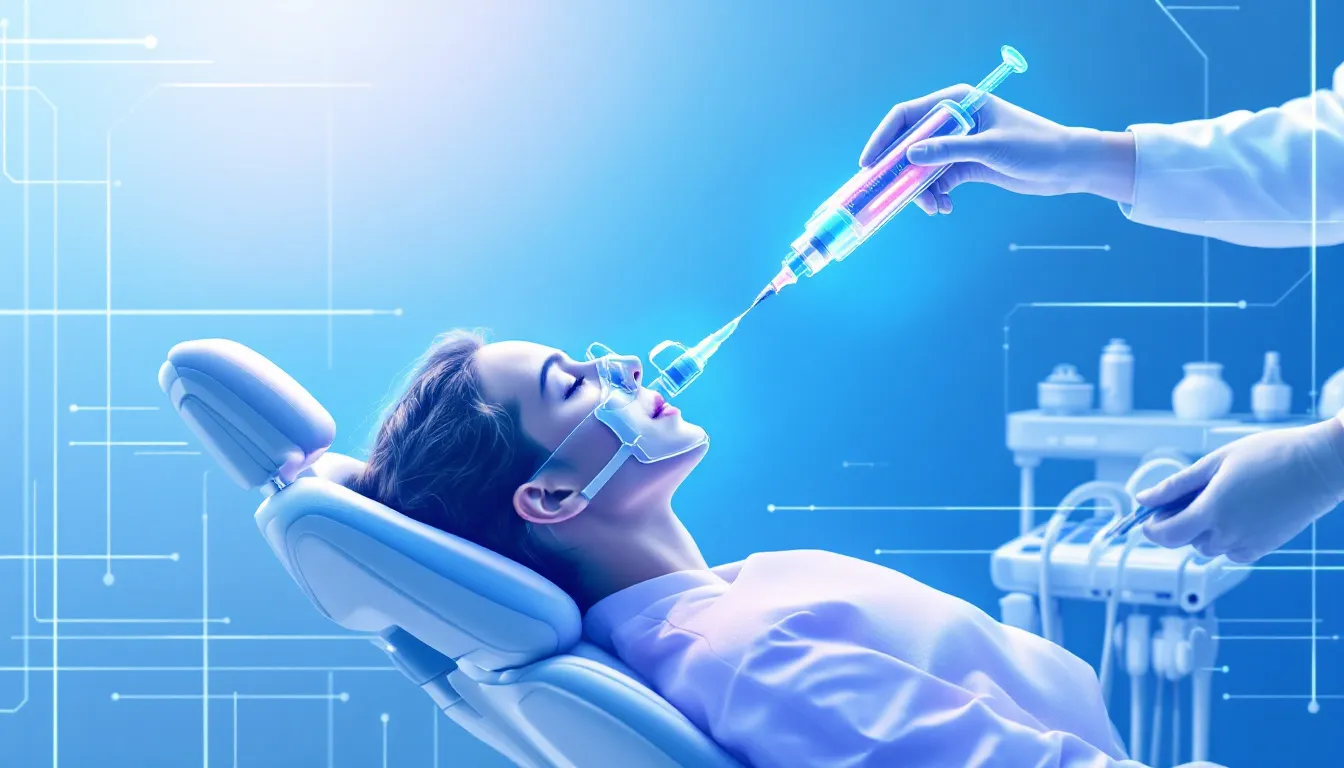
How Long Does Nitrous Oxide Last? Everything You Need to Know
Wondering how long does nitrous oxide last? The effects of nitrous oxide in medical or dental settings start within 3-5 minutes of inhalation. Commonly used during dental procedures, nitrous oxide, also known as laughing gas, is effective in alleviating anxiety and minimizing discomfort for patients. Once the gas supply stops, the calming sensations and pain relief usually fade within 5-10 minutes. This quick recovery means you can resume normal activities shortly after. This article will delve into how nitrous oxide works, its immediate effects, potential side effects, and important safety considerations.
Key Takeaways
Nitrous oxide, or laughing gas, provides rapid sedation and pain relief in medical and dental settings, typically taking effect within 3-5 minutes and dissipating quickly after cessation.
While generally safe and effective, the effects nitrous oxide can cause minor side effects such as lightheadedness, nausea, and compromised motor skills if proper precautions, like oxygen administration and dietary recommendations, are not followed. It is also contraindicated in certain health conditions like significant respiratory issues or severe nasal congestion.
Long-term exposure to nitrous oxide carries risks such as vitamin B12 deficiency and mental health issues, highlighting the importance of its use under strict medical supervision.
Understanding Nitrous Oxide

Nitrous oxide, often referred to as laughing gas, is an odorless and colorless substance that has been routinely used for sedation in medical and dental practices since the 1800s. Its role includes reducing anxiety and discomfort during procedures by promoting a relaxed state in patients. Nitrous oxide sedation is particularly prevalent within dentistry due to its effectiveness at mitigating the fear and pain associated with treatment. It’s crucial to adhere strictly to safety protocols when using laughing gas.
Upon inhaling nitrous oxide through either a nasal hood or mask, individuals typically experience soothing effects such as tranquility and euphoria while their perception of pain significantly diminishes. This quality makes the gas highly valuable for easing patient fears related to healthcare interventions, allowing them to receive necessary treatments without excessive stress.
The process of administering this type of anesthesia involves having patients breathe in nitrous oxide via a fitted nasal hood or face mask. They quickly begin feeling its serene impact shortly after inhalation begins—usually within minutes. Nitrous oxide’s ease of administration coupled with its swift action onset and established record for safe use continues securing its status as one of the preferred sedatives across both medical and dental care environments.
Duration of Nitrous Oxide Effects

One of the key attractions of nitrous oxide is its ability to take effect quickly, with patients typically experiencing relief from pain and anxiety within 3-5 minutes following inhalation. This rapid onset greatly aids in clinical scenarios where prompt management of discomfort and stress is vital.
The cessation of nitrous oxide’s gas flow leads to an equally expedient clearing of sedative effects. Within a span of 5 to 10 minutes after stopping the gas flow, most individuals find that they are no longer under the influence. Due to this quick dissipation, there’s minimal disruption as patients can resume their daily activities immediately post-treatment without enduring the extended drowsiness commonly associated with alternative sedatives.
For those who have undergone minor procedures or need to drive themselves subsequent to treatment, fast recovery from nitrous oxide-induced sedation presents a significant advantage. The transient nature also diminishes chances for enduring side effects, positioning nitrous oxide as a convenient and approachable option for patient sedation.
Immediate Aftereffects of Nitrous Oxide

The effects of nitrous oxide wear off as swiftly and gently as they arrive. This gas works quickly within the body to alleviate anxiety and pain, with patients often feeling its calming influence within minutes, aiding in a more cooperative experience throughout their procedure.
As soon as the mask is removed and the supply of gas ceases, the slowing down of nitrous oxide’s effects begins. Patients commonly recover their full cognitive abilities almost instantly after cessation, returning to normalcy typically within half an hour following their procedure—allowing them to smoothly resume daily activities without prolonged grogginess.
The laughing gas effects include immediate relaxation and euphoria, which can vary based on dosage, administration method, and individual metabolism. After exposure, some patients may temporarily encounter sensations such as light-headedness or a slight restlessness. These symptoms are short-lived and easily managed. Post-procedure administration of 100% oxygen is common practice for expelling any remaining traces of nitrous oxide from a patient’s system.
Nitrous Oxide Side Effects

Typically, patients handle nitrous oxide without serious issues. The inhalation of this gas can lead to mild side effects for some. These may include feelings of lightheadedness or dizziness that dissipate swiftly once administration ceases. A sensation of nausea might occur shortly after the treatment.
On occasion, individuals could undergo more intense reactions like pronounced nausea or vomiting post-treatment with nitrous oxide. In such instances, health practitioners often offer oxygen and anti-nausea medication to alleviate discomfort and facilitate a smooth recovery for their patients.
Vigilance in detecting any adverse effects is vital for safeguarding patient well-being during their experience with this form of treatment. Recognizing even transient and less severe symptoms enhances overall care by ensuring both safety and reassurance throughout the process. It is crucial to avoid too much nitrous oxide in the gas mixture, as excessive concentration can lead to headaches and other side effects. Administering oxygen post-treatment helps counteract any adverse reactions.
Safety and Contraindications
Despite its widespread application, nitrous oxide isn’t appropriate for all patients. Its use is contraindicated by certain health issues such as significant respiratory complications or conditions predisposed to the enlargement of air-filled spaces within the body, including pneumothorax or eye surgeries that have employed intraocular gas recently. Those with considerable nasal blockage who would struggle to utilize a nasal mask properly are not suitable candidates.
It’s advisable for pregnant people, especially during their first trimester, to exercise caution concerning the use of nitrous oxide owing to potential hazards it poses on embryonic growth such as congenital abnormalities risk factors. In addition, individuals with previous instances of stroke, low blood pressure, and cardiac issues should proceed with nitrous oxide utilization under meticulous supervision so as to circumvent any negative repercussions.
The design features integrated into delivery apparatuses enhance the security associated with administering nitrous oxide by averting exposure levels considered unsafe. These configurations often come equipped with warning systems capable of alerting dental professionals about alterations in gas pressure ensuring safe and efficient administration of sedative measures. This makes laughing gas safe when administered by healthcare professionals following established safety protocols.
Comparing Sedation Options
Nitrous oxide is a standout choice among sedation methods, offering an effective yet safe approach. In contrast to general anesthesia that leads to full unconsciousness, nitrous oxide allows patients to remain awake and communicative. Laughing gas helps to create a calming environment for patients, alleviating anxiety and managing pain, making it the go-to option for less invasive procedures as well as individuals who experience anxiety during medical or dental interventions.
Oral sedatives may take more time before they become active and can often result in lingering sleepiness post-procedure. IV sedation delivers a deeper state of calm, but necessitates an intravenous line placed, which could be daunting for some individuals. Each method of providing sedation brings its own set of advantages and drawbacks depending on the specific needs of the procedure and patient.
Within the realm of sedation dentistry specifically, nitrous oxide maintains its popularity because it acts quickly, is simple to administer, and requires little recovery time after use. Its adaptability enables customization across various levels ranging from mild relaxation up through effects similar to those provided by general anesthesia. Thus accommodating numerous types of both dental surgeries or other healthcare treatments.
Nitrous Oxide in Dental Procedures

In dental settings, a small mask designed to cover the nose, often referred to as a nasal hood or face mask, is employed to administer nitrous oxide. This approach enables patients to comfortably inhale nitrous oxide through their nose but not their mouth, allowing them to breathe naturally and experience its soothing effects. The dental team vigilantly observes the patients for any changes in vital signs and levels of sedation throughout the procedure to ensure their safety.
The systems used for dispensing nitrous oxide come equipped with precautionary features such as alarms that notify the dental staff about variations in gas pressure or flow rates. These safeguards assist in maintaining an appropriate mixture of nitrous oxide and oxygen, averting potential complications during a dental operation.
When applied appropriately, nitrous oxide offers substantial relief from pain and anxiety among patients who are nervous or distressed by dental treatments. Due to its safety profile, effectiveness at providing relief, and simple application method, nitrous oxide serves as an essential resource within contemporary dentistry practices.
Long-term Implications of Nitrous Oxide Use
Nitrous oxide is considered safe for short-term applications. Prolonged exposure can lead to significant health issues. Notably, long-term use can cause a deficiency in vitamin B12 which may result in severe damage to the brain and nerves over an extended period. Chronic users might suffer from numbness in their hands and feet as well as involuntary muscle contractions, both of which could interfere with everyday activities.
When considering how long does laughing gas last, it is important to note that the duration and effects can vary based on dosage and individual metabolism. Extended inhalation of nitrous oxide also has the potential to harm mental wellbeing by triggering memory loss, depression, or even psychotic symptoms. Those who regularly inhale this gas might see a decline in immune function and disturbances affecting reproductive health, highlighting the necessity of administering it under rigorous medical oversight.
Recreational utilization poses substantial risks due to its unregulated nature—users often consume excessive amounts of nitrous oxide unlike what’s observed within controlled medical or dental environments—thereby elevating susceptibility to acute adverse effects and persistent detrimental health outcomes.
To mitigate these hazards associated with improper administration, one should restrict usage solely within clinical contexts where professionals are equipped to supervise its delivery vigilantly. Recognizing such protracted consequences is crucial when evaluating the prudent use of nitrous oxide so that any advantages garnered surpass accompanying dangers.
Summary
Known also as laughing gas, nitrous oxide has established its worth as a reliable sedative in the realms of both medical and dental care. It appeals to professionals due to its quick effect, short-lived action, and limited adverse reactions, offering patients relief from discomfort and apprehension when undergoing various procedures. Nevertheless, users must be cognizant of any potential side effects or safety concerns associated with it to ensure responsible application.
To sum up, nitrous oxide stands out as an advantageous option for those seeking a more calming experience while receiving medical or dental treatment. When administered correctly and under careful supervision, the advantages provided by this gas can significantly overshadow any hazards involved—making it a secure method for achieving sedation. Consulting with your healthcare provider is crucial in deciding whether nitrous oxide constitutes an appropriate choice tailored to your needs.
Frequently Asked Questions
How quickly does nitrous oxide take effect?
Nitrous oxide usually begins to take effect within 3 to 5 minutes after inhalation. This rapid onset makes it effective for quick anesthesia and pain relief. However, caution is required during procedures like middle ear surgery, as the use of nitrous oxide can lead to a rapid increase in gas volume and pressure, potentially causing dangerous situations.
How long do the effects of nitrous oxide last after the gas is turned off?
The effects of nitrous oxide typically last for 5 to 10 minutes after the gas is turned off, which is important to understand when considering how long laughing gas lasts during dental procedures. This brief duration allows for quick recovery in most cases.
What are the common side effects of nitrous oxide?
Common side effects of nitrous oxide are lightheadedness, dizziness, and nausea.
If you receive nitrous oxide and experience these symptoms, it’s important to inform your healthcare provider.
Is nitrous oxide safe for everyone?
Generally speaking, nitrous oxide is considered to be safe. It should not be used by people who have serious respiratory problems or women who are in the first trimester of their pregnancy.
Before using nitrous oxide, it’s crucial to seek advice from a healthcare provider.
How does nitrous oxide compare to other sedation options?
Nitrous oxide offers the advantage of keeping patients conscious and responsive while providing a faster recovery time than oral sedation and is less invasive than general anesthesia.
This makes it a preferred option for many procedures.





Leave a comment
This site is protected by hCaptcha and the hCaptcha Privacy Policy and Terms of Service apply.